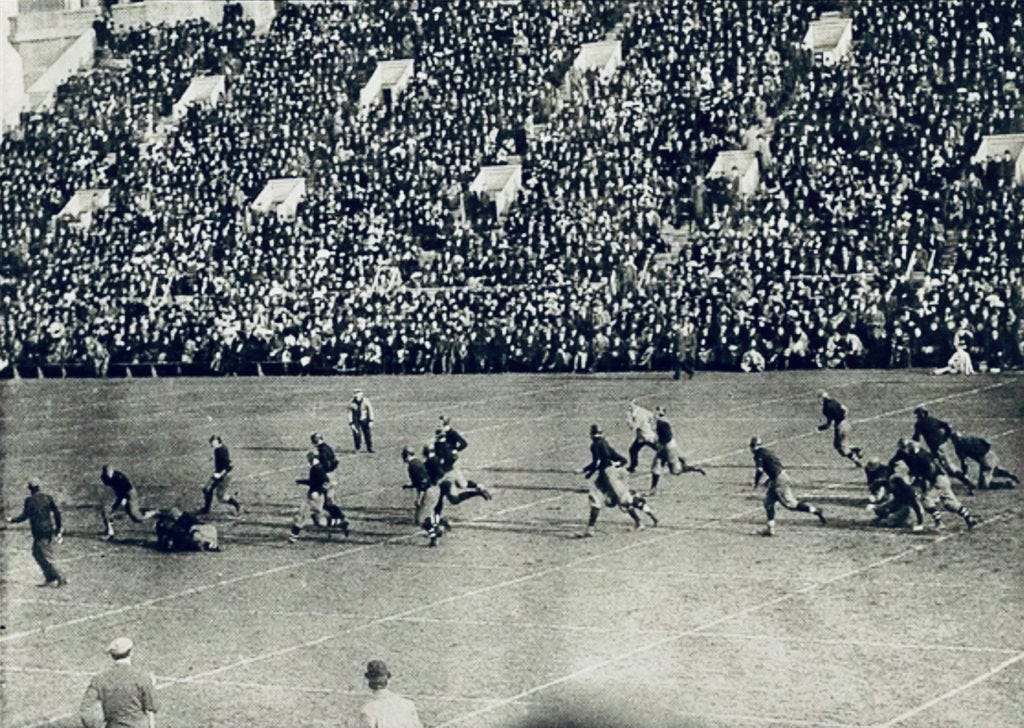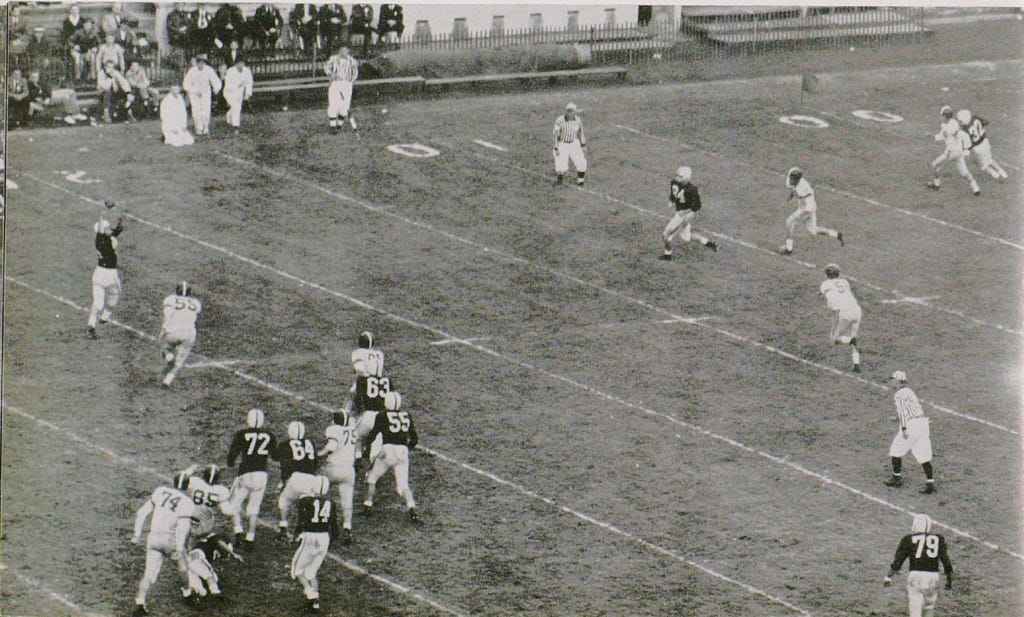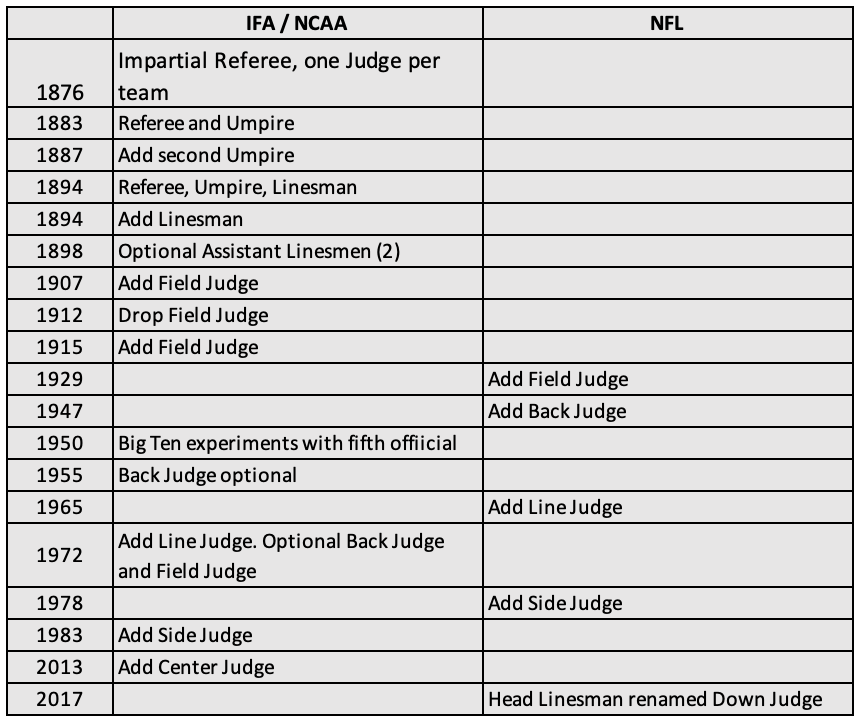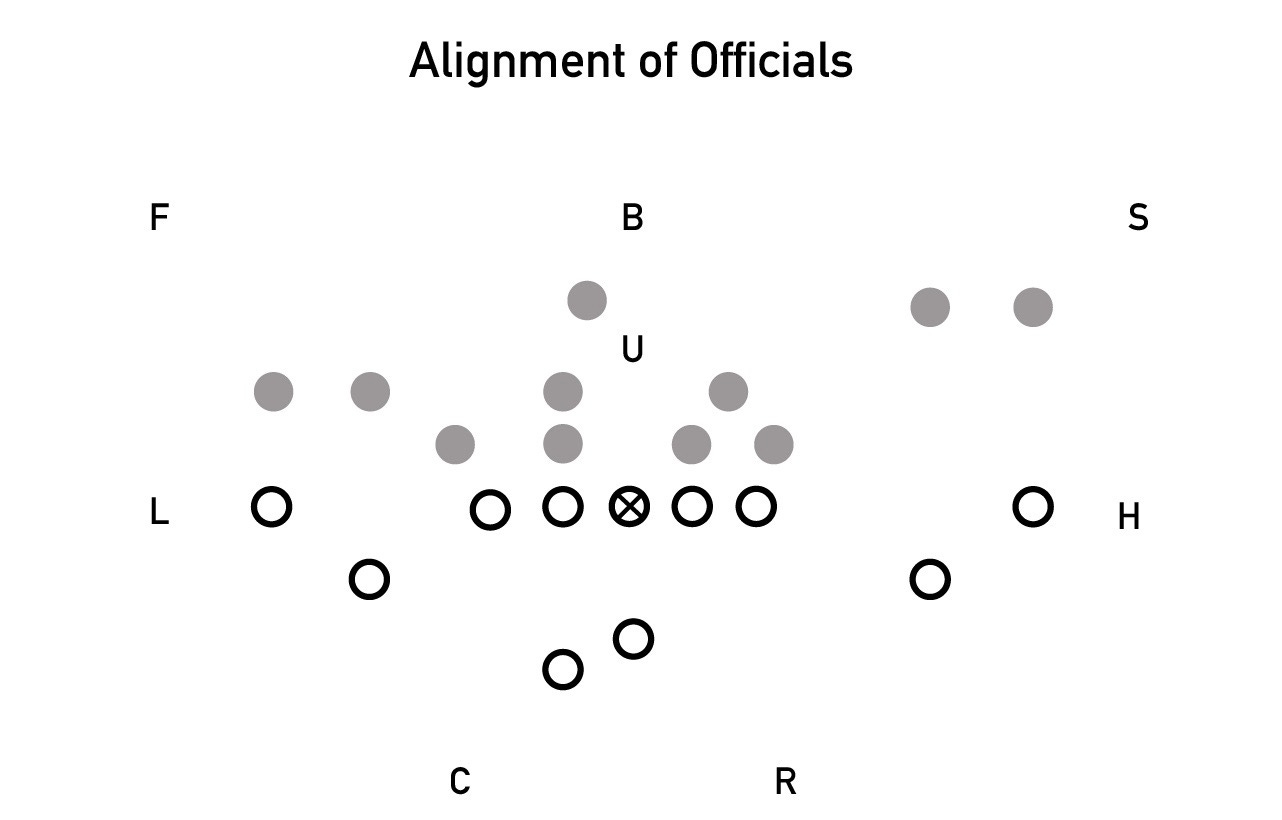How Changes in Football Led to Larger Officiating Crews
Football officiating crews added members as changes in play made the game more difficult for existing crews to officiate. This post explores when and why new crew members joined the fray.
When the Intercollegiate Football Association met in 1876 and laid down the rules of the game that became gridiron football, the addition of football officials was among the few rugby rules they modified. England's rugby rules naively assumed opposing team captains would honorably handle disputes, but the Americans knew better and opted to add an impartial referee and two judges, each of whom was appointed by and represented one of the competing teams. The judges, sometimes called umpires, ruled on scoring, out of bounds, and advocated for their teams in disputes. The referee settled those disputes, but the combination proved unsatisfactory, and by 1883, the game began using two impartial officials: a referee and an umpire.
The referee was responsible for the ball. He judged where to place the ball, ruled on out-of-bounds issues, and determined whether the ball crossed the goal line or passed through the uprights. The umpire controlled the players, monitoring fouls and unfair tactics. Both kept busy, particularly the umpire who had to monitor twenty-two players capable of foul play.
Referees, who assessed whether the offense had earned a first down, had difficulty doing so since the field had stripes only every five or ten yards, while most first downs came at spots between the lines. To assist those judgments, referees dropped handkerchiefs on the field at the location of the first down. Of course, those handkerchiefs sometimes moved due to play occurring atop them and players kicking them in the direction favoring their sides. The confusion led to adding a third official, the linesman, in 1894. He marked the progress of each play versus the line to gain and monitored the neutral zone. (Read about the evolution of the chains and down box here.) The linesman typically positioned himself five to seven yards outside the widest player on his side of the field. The closed formations of the era often meant the linesman was on the field, whereas today's spread formations force him to the sideline.

It was difficult to officiate a game with only three officials, but it was simpler than now because their duties were limited. Like rugby, the officials did not spot the ball back then. The offensive center did so wherever the previous play ended. Players even brought the ball back onto the field from out of bounds. There were no incomplete forward passes requiring retrieval, few substitutes, and the game had a running clock, stopping only for various kicks. Last, there were far fewer rules. Roughing the punter, clipping, and any number of other penalties did not exist, and neither did the referee's signals to inform the crowd of called transgressions. The referee explained penalties to the captains, marched off the yardage, and the teams played on.
Things changed with the new rules of 1906 intended to open up the game. Though teams were slow to use the forward pass due to the many restrictions on its use, the new rules allowed the onside kick from scrimmage, effectively making punts recoverable by either team. Three-person crews had difficulty monitoring those activities downfield, so the rule-makers added the field judge in 1907. A 1910 rule prohibited passes more than twenty yards downfield, which put more responsibility on the field judge. The rule-makers dropped that rule in 1912, and the field judge went with it. When the passing game grew in the mid-1910s, however, the field judge returned in 1915, and by the 1920s, he also handled the game clock, delays of game, and tracked timeouts.

The NFL stopped using the college rule book, developing their own in 1933, ultimately leading to differences in officiating crews and responsibilities. To protect the dropback quarterbacks emerging as stars in the passing-oriented pro game, the NFL added the back or sideline judge in 1947. Positioned a few yards behind the line of scrimmage along the sideline opposite the head linesman, the back judge focused on illegal motion and shifts in the offensive backfield, allowing the referee to focus on the QB. The back judge also monitored his sideline, adding another set of eyes on plays downfield.
The Big Ten experimented with a fifth official in 1950, formally adding the back judge in 1951. Other major conferences followed suit during the 1950s. (College officiating crews varied in size then and now based on the budgets available at each competitive level. Full officiating crews are generally not used at lower levels.) During this period, the field and back judges switched roles, with the back judge being positioned in the defensive backfield to monitor the downfield passing.

As the passing game continued progressing, spread offenses became popular in the early 1960s, as did scrambling quarterbacks such as Fran Tarkenton. To improve downfield monitoring while also ensuring scrambling quarterbacks were behind the line of scrimmage when throwing the ball, the NFL added the line judge in 1965. The line judge took over the position and many responsibilities previously handled by the field judge, allowing the field judge to return to the defensive backfield, joining the back judge. College football added the line judge in 1972.

Concerns about tight ends and other receivers being held and interfered with fifteen to twenty yards downfield led to the NFL's 1978 addition of the side judge, positioned with the field and back judges in the defensive backfield. The NCAA followed suit in 1983 and has since one-upped the NFL by adding an eighth official, the center judge, positioned behind and to the left of the offensive formation to assist the referee in monitoring line play.

Although it is unclear how football officiating crews might evolve in the future, we can be sure there will be changes. This article did not address the role of remote officials -those involved in video reviews. We can expect that function to expand with continued improvement in video technology and real-time monitoring of players' locations. Rather than adding on-the-field officials, additional remote officiating is likely to play a role moving forward.
Football Archaeology is reader-supported. Click here to buy one of my books or otherwise support the site.

